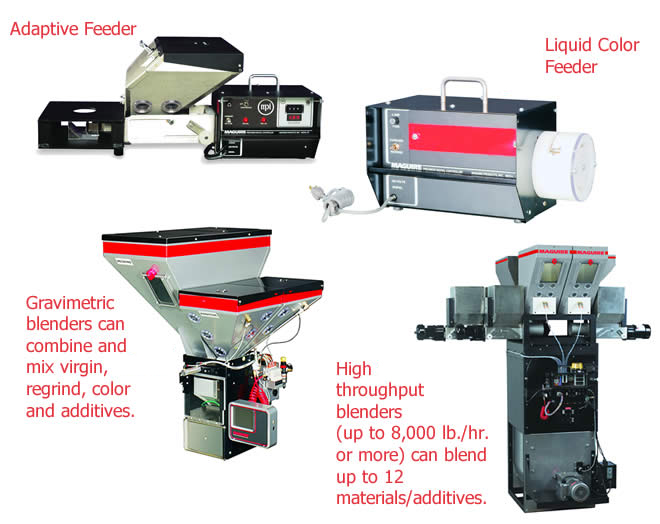Blending Basics
What is blending?
Blending is an efficient, thorough and automated way to combine material ingredients, in pre-determined proportions, and then mix them together in preparation for the production of plastic parts or products. Materials to be blended may be metered into the blend by quantity (volumetric blending) or by weight (gravimetric blending).
For more on volumetric vs. gravimetric:
Dosing is the process of metering individual ingredients, which can be accommodated by a stand alone ‘feeder’ on the throat of processing machine, or within a fully automated, multi-component blender. In either case, dosing can be employed by volume or by weighing.
Processors can blend basic plastic resins and additives/colorants in-plant, as needed, into recipes that are required by their process and the final product. This is typically less expensive than purchasing pre-mixed material from a supplier.
Typical blending and dosing applications include:
- Coloring
- Stabilization (UV resistance, rigidity, chemical or electrical properties etc.)
- Consumption of Regrind(s)
The blending/dosing process can be employed from 1 to 8000 pounds of material per hour, in pellet, regrind, concentrate, powder, flake and even liquid forms.




